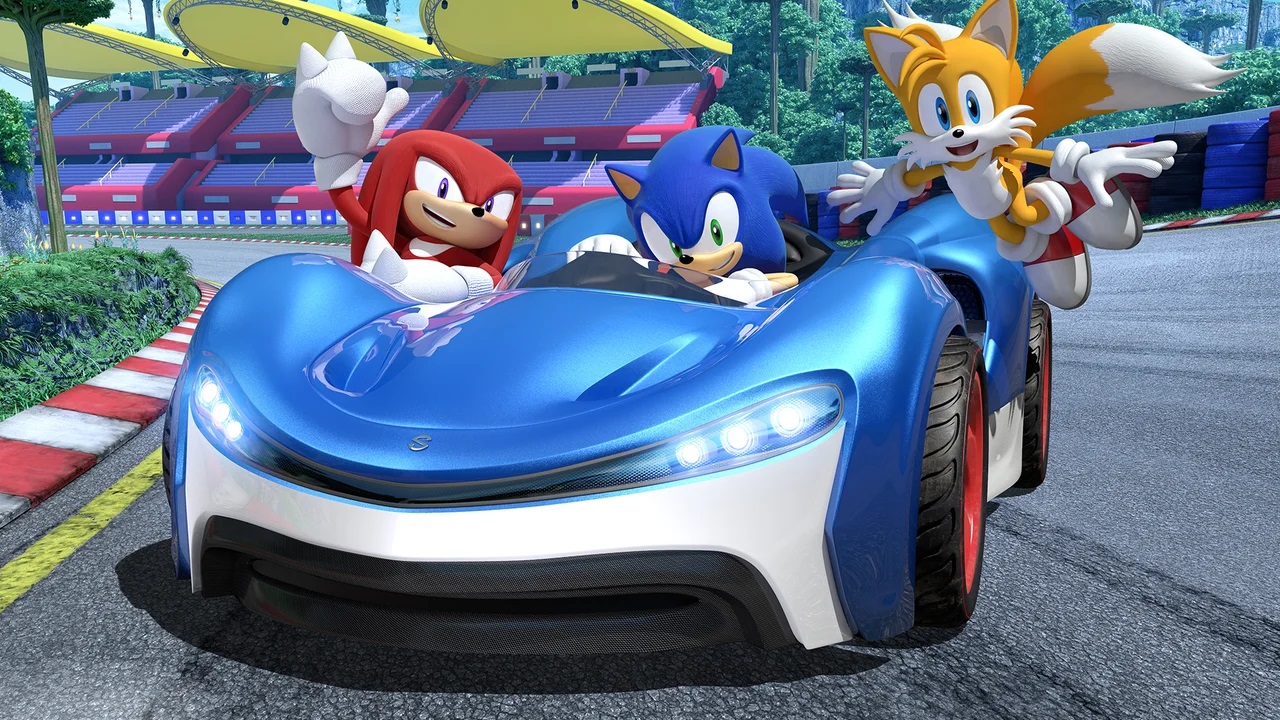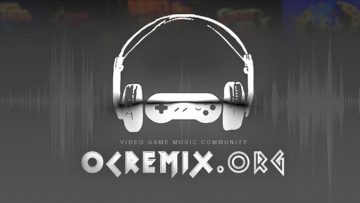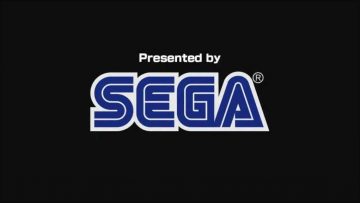
Review: Team Sonic Racing (PlayStation 4)
PlayStation 4 review code provided by Sega.
I think it is fair to be worried about Team Sonic Racing. The game was looking pretty rough in previews last year, with a weirdly slow pace and a poor framerate. In retrospect, the six month delay to May 2019 makes a lot of sense, and I’d say it’s had a very positive effect on the way Team Sonic Racing looks and plays, with 60fps gameplay (at least on my PS4 Pro) and controls more similar to past games. But it may not have been enough.
In recent memory, there has only ever really been one serious competitor to challenge Nintendo’s Mario Kart franchise, and that was Sonic & All-Stars Racing Transformed. Though it wasn’t quite as polished as Mario Kart 8, it made up for it with deep nostalgic callbacks, more tracks (at least initially), more modes, and a greater focus on being a smarter game. It’s no secret that Mario Kart often embraces party game chaos, but Transformed attempted to be a thinking-man’s Kart racer, if such a thing exists. So-called “win button” weapons like the blue shell or lightning bolt were pared back to even the playing field, where driving well and chaining together stunt-boosts mattered.
This is the shadow Team Sonic Racing (TSR) finds itself in.
The big new idea this time around is team-based racing. Instead of worrying about your own position within an event, now you must concern yourself with the fate of your team at large. This is something more than one developer has experimented with lately, often with mixed results. The problem has to do with the core tenants of racing: the goal may be to win the race, but you have little control over the actions (and fate) of your team.
This can be true of TSR as well. Teammates may mean well, but they can still unintentionally ram you off the road, steal your items, or block well-aimed shots. And then the most dreaded outcome: a lagging (or simply unlucky) teammate can cause you to lose an event, even though you yourself may have finished first. Scores are cumulative for the entire team, and you can’t do much to rescue a flagging ally. So, sometimes, despite winning the race, you still lose the event. When it happens, it feels worse than being hit with any of Mario Kart’s blue shells.
Thankfully, at least in single player, your CPU companions try to stay out of your way, instead falling in line behind you and scooping up your leftovers. The game is balanced to emphasize moving as a unit, with the leader leaving a slipstream trail to keep the rest of the team behind them. This means if you’re in first, it’s easier for your buddies to keep second and third locked down.
In practice, it means that you don’t have to worry about the rest of your team. They’ll occasionally pass you an item, and you can return the favor, but by and large they let you run your race and will try to keep up when possible. They feel the most useful after you’ve taken damage from an enemy; when two teammates pass each other, there’s the potential to do something called a “skimboost,” where the faster of the two will slingshot the other forward. The effect is more pronounced when the gaps in speed are greater, which means your teammates will mainly give you skimboosts to recover after taking damage. It makes them feel like a valuable asset.
It’s surprising how much of the game focuses on playing as a team, actually. Obviously it’s the big thing the game is hanging its hat on, but also included is the ability to play through Grand Prix mode solo, with similar gameplay to previous Sonic Racing games. Without your two partners to back you up though, the game struggles to hold together. Though team actions are limited, they are interwoven very tightly with the game’s systems. Weapons get upgraded when you trade them with other team members, and your Ultimate Attack meter can only be charged by helping out your friends. Playing by yourself removes these systems, leaving you to take the full brunt of your opponent’s attacks with no safety nets. Going solo makes for a difficult and surprisingly limited experience that I found more frustrating than fun.
A high level of difficulty is something this series of games has been known for in the past. Mostly, I felt like previous Sonic Racing games asked you to be more aware of your opponents. Artificial intelligence in games like Mario Kart tends to be pretty brain dead, with enemies sleepwalking through races and firing weapons at random. A game like Sonic Racing Transformed required you pay attention to firing lines, because CPU racers would take any shot they had to get ahead. To balance out that aggression, rubberbanding (the act of opponents getting a boost to catch up to first place) was toned down significantly, meaning if you got enough of a lead, you were untouchable.
The difficulty in Team Sonic Racing is much closer to that of a typical Mario Kart, in some aspects. As mentioned earlier, having teammates at your back makes recovering from attacks considerably easier, and that applies to all teams, leading to an overall more chaotic game. Weapons this time around are much closer to Mario Kart’s, too. The brand-new Ghost Wisp item functions exactly like Mario Kart’s own ghost, and there’s even a lightning bolt in play now, too. Rubberbanding seems a little more aggressive as well, especially towards the end of TSR’s story mode, where you’ll encounter opponents that not only seem impossible to shake, but eventually drive faster than you do with less effort.
You also read that right: this game has a story mode (called “Team Adventure”). As I understand, both All-Stars Racing and Sonic Racing Transformed were also slated to have story modes, but the plot elements were axed from those games at the last second, leaving just a bare mission mode behind. This time, the plot survives, framing a very similar mission structure to Transformed. You move an icon around various maps, completing races and doing side events, while earning stars to unlock gates and progress forward.
Unlike Transformed, where you had to grind for stars to unlock new map spaces, TSR is considerably more generous in its approach. By the time I reached the story’s seventh and final chapter, I had double the amount of stars required for most of the last few gates. That’s not to say Team Adventure is easy, mind you. Some missions, like the Daredevil events (where you are graded by how closely you can skim checkpoint posts without touching them), are incredibly challenging to get high scores on, and the nightmarish Traffic Attack missions from Transformed also make a return. It’s just now you won’t find yourself getting stuck on one of these missions with no way to progress forward.
The story, for its part, is pretty okay. It’s not told with terribly lavish cutscenes (mostly it’s static cutouts of character art), and some of it reads like an 80’s toy commercial for merchandise that doesn’t exist, but it’s got more charm and personality than most other Sonic game plots. Dialog can be pretty sharp when it wants to be, bringing to mind shades of the Sonic Boom TV series. I’m not ashamed to admit I actually laughed out loud more than once, and I can’t remember the last time a Sonic game made me do that, if it ever has. It’s also fully voice acted, though some of the characters may sound different than you remember (particularly Knuckles, Rouge and Silver). Still, everyone turns in some of the best, most nuanced voice performances this series has seen to date, and it really makes up for the lack of animation.
The issue is whether you’ll even see the cutscenes. TSR does a weird thing where every square on the map can accessed by pressing one of two different buttons. Depending on which button is pushed, you’ll either watch that mission’s cutscene or ignore it entirely, and the way the buttons are laid out, you’re more likely to accidentally skip the cutscenes and never know there is a separate option to watch them. This is what happened to me, and it wasn’t until over an hour in to the Team Adventure mode that I noticed the tiny text at the bottom of the map screen instructing me to push the Square button on my PlayStation controller to view that mission’s story. It’s weird to have a feature like this only to bury it in such a strange way.
If you haven’t noticed, Team Sonic Racing is full of weird little fumbles like this. For example, take “mod pods,” which is what TSR calls lootboxes. Essentially, every time you complete an event, you’re awarded tokens that can be spent on the mod pod capsule machine. The game showers you in tokens, easily 30+ for finishing a single race, so by the time you get back to the capsule machine you’ll probably have at least a few dozen mod pods to open. How does TSR handle this? By making you open each individual capsule, one by one, watching the exact same totally lifeless capsule opening animation every single time.
What you get from these mod pods isn’t exactly thrilling, either. Each racer can modify their vehicle in three categories — front, rear, and wheels, and in those categories, you get four parts each. It’s a far cry from the dozens of options provided by a game like Mario Kart 8, and I personally don’t think a lot of TSR’s optional car parts look all that cool. Most of these cars have consistent, maybe even iconic looks, and once you start swapping around parts, it looks awkward. Beyond that, you can also customize a vehicle’s paint job, but there’s not a lot to work with here, either. Each car operates on a VERY limited color palette, meaning you aren’t given much room to express yourself. You even get custom horns, but they’re barely audible over the gameplay and there’s a limit on how often you can honk. Where’s the fun in that?
How about Grand Prix mode. Team Sonic Racing contains 21 tracks and five main Grand Prix cups, just like Sonic Racing Transformed. However, over one third of the tracks in TSR are recycled from the previous two games, and this isn’t like Mario Kart 8 where the classic tracks ended up being completely redesigned from the ground up. In TSR, most of the returning tracks from the past two games are similar, if not often identical to their original versions. Worse still, three of those tracks don’t even show up in Grand Prix mode. For whatever reason, TSR treats it like a big secret that the three Final Fortress tracks from Sonic & Sega All-Stars Racing have been ported over to this game, and they aren’t unlocked for play until after you finish story mode. This means that when you first start the game, you actually only have 18 tracks available.
But it gets worse. If you do a little math, TSR’s five Grand Prix cups, at four races per cup, doesn’t divide in to 18 tracks — you end up two tracks short. So, for the fifth and final Grand Prix, TSR simply doubles up on tracks from previous cups to fill in the gaps. Logic would dictate that once you unlock the Final Fortress tracks, those would take the place of the tracks reused from other GPs, giving you a full five Grand Prix cups (with an extra vestigial track, unconnected to any GP). Instead, unlocking Final Fortress does nothing, and those three tracks are not present in any of the game’s Grand Prix cups — they’re available for exhibition races and time trials only. It’s clumsy.
Team Sonic Racing could have used more variety, too. One of the benefits of past Sonic racers were the deep cuts it could make in to Sega’s legacy, digging up characters like Billy Hatcher or Gilius Thunderhead, driving through tracks from Burning Rangers or Jet Set Radio Future, you know? There is none of that surprise in Team Sonic Racing. The tracks themselves may look very nice, but especially as you work your way through story mode, you’ll play a lot of events on the same three Planet Wisp tracks, where dreams of visiting Skies of Arcadia or Panzer Dragoon are a far-off wish never to be granted. Instead, you’re left with seven environment types with three tracks each, and to say it all starts to feel predictable is an understatement.
At E3 in 2018, it was also stated that players would be able to customize teams as they saw fit, with the example given that players could race as a team of all fast characters if they chose. This is only partially true in the final game; while playing story mode in co-op, players will be locked down to whatever team player 1 chooses. While racing in other modes, human players can obviously choose whoever they want, and set up custom teams with their friends if they so desire, but the game will always fill empty slots with random CPU players. There is absolutely no way whatsoever to pick your CPU allies, so you might load in to a race as Sonic, only to be assisted by Vector the Crocodile and E-123 Omega, two of the slowest characters in the game. Your options are to either put up with it, or quit the race and reroll for somebody you like more. Not cool.
It all drags the experience down. There’s technically nothing wrong with the core of Team Sonic Racing — the actual game itself plays fine, and if you compare the raw numbers with past Sonic Racing games, TSR mostly holds its own in amounts of content. But a lot of things around that core feel a little bit off-kilter in some disappointing ways. It was never enough to outright ruin my enjoyment of the game, but it rubs me the wrong way just the same. I imagine this game definitely needed its six month delay, but if we’re being honest, it probably could’ve used a few more even beyond that. There’s still a fun game in here, but at the very least, consider it a step back compared to its predecessors.
Included below is 16 minutes of various parts of Team Sonic Racing’s story mode, showcasing a small handful of different cutscenes, tracks, and side events. It’s mostly spoiler-free.

![[ID: 9KQo6g6Lrs8] Youtube Automatic](https://lastminutecontinue.com/wp-content/uploads/id-9kqo6g6lrs8-youtube-automatic-60x60.jpg)

![[ID: 1ygKwlOkoIs] Youtube Automatic](https://lastminutecontinue.com/wp-content/uploads/2024/09/id-1ygkwlokois-youtube-automatic-360x203.jpg)
![[ID: -i7lo3Hvd0U] Youtube Automatic](https://lastminutecontinue.com/wp-content/uploads/2025/01/id-i7lo3hvd0u-youtube-automatic-360x203.jpg)

